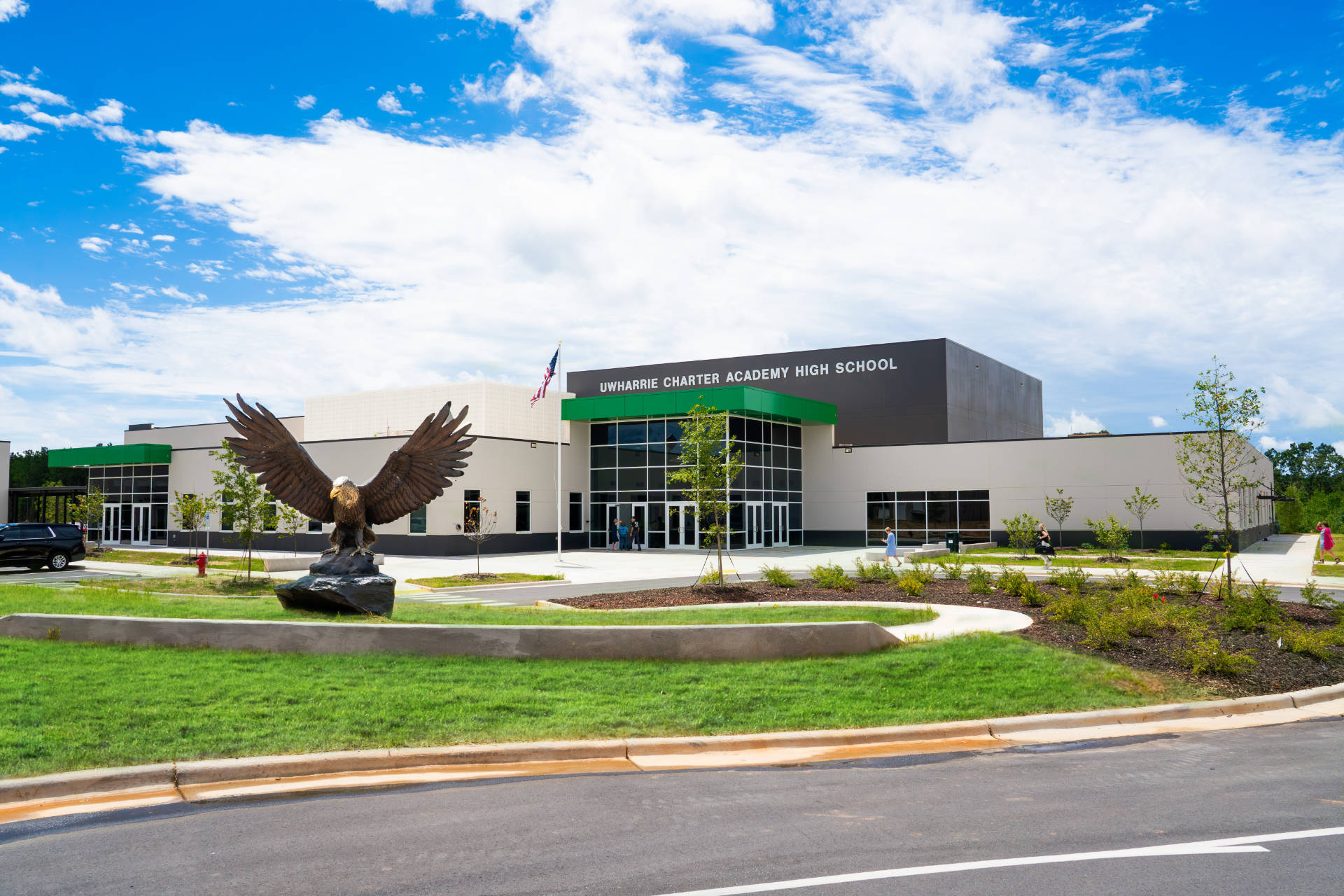
Intro to Charter Schools
An Intro to Charter Schools
AN INTRODUCTION TO CHARTER SCHOOLS IN NORTH CAROLINA
Are charter schools public schools?
YES! Charters receive the bulk of their funding from the state and county governments, the same as traditional schools. Charters are authorized only by the State Board of Education (SBE) under state statute. Unlike some states, North Carolina is a single authorizer state. Their oversight comes from the Charter School Advisory Board (CSAB) and the Office of Charter Schools (OCS) located in the Department of Public Instruction. Charters are governed by a non-profit corporations instead of a local Board of Education. Some charters board of directors contract with a for-profit company to operate the school on a day-to-day basis, but all charter schools are non-profit.
How many charter schools and students are there?
Currently, there are 156 brick and mortar schools and two virtual schools that educate almost 82,000 students in 59 counties. The CSAB is reviewing 28 new applications this year. A 100 school cap was removed in 2011. Approximately 85% of charters have waiting lists.
How are the students who attend a charter school determined?
Charter schools are given a maximum student funded enrollment by the SBE. Parents apply on behalf of their children to a charter school. Any student eligible to attend a NC public school may apply to any charter school in the state. Therefore many charter schools have students from many counties besides the county in which it is located. Just because a legislative district does not contain a charter does not mean it does not have charter students. If a charter receives more applications than its allotment, a lottery is conducted with exemptions for staff children and siblings. Charters cannot pick and choose who attends them and discrimination by race is specifically prohibited.
How are charter schools funded?
Charter Schools receive a per pupil allotment from the state based on the state funding for the county in which it is located. Schools receive access to their funding three times a year. Each school also receives a per pupil share of local funding from each District whose parents send students to the charter. However, certain local money is exempted from being shared with charters including most local education taxes. The number of students on which a school receives funding on is determined once a year 20 days after school begins – the same as traditional schools. The state budget supplies $366 million to charters. If charters would eliminated, this funding would go to traditional schools, but so would most of the students.
How are charter schools accountable for taxpayer dollars?
The public funds going to charter schools are very transparent. A special division of DPI, the Office of Charter Schools (OCS), is dedicated to charter oversight, as is the Charter Schools Advisory Board. Charters must adhere to a lengthy charter contract with the state. They cannot even access their state dollars directly, but instead must provide documentation before their bills are paid by the state. There are surprise visits by OCS consultants, an annual audit by a CPA firm, and the Financial Performance Framework Guide designed specifically for charter schools. They are subject to host of laws, and state and federal agencies.
What flexibility do charters have?
Charter Schools not responsible to the local school district office as are traditional schools. While charters must adhere to the state requirements for school days, they do not have a set minimum school opening or closing date. Charters are not required to pay their principals or teachers by the state scale. Charters are not required to provide transportation or lunch, but many do. As part of the charter contract with the state, charters are required to make sure no sure no student is prevented from attending because of lack of those services.
What about EC students?
In North Carolina, the percentages of students requiring Exceptional Children (EC) services in charter and traditional schools are approximately the same. The funding formula is same: a per pupil allotment for each student identified regardless of the severity with a further application to the Reserve Fund for more severe cases. Funding is limited to 12.5% of the students, even if the number of EC students exceeds 12.5%. With limited back office resources, charter schools have found this system cumbersome to say the least.
How do charters obtain their facilities?
Charters do not receive any funding from the state for their facilities. County governments are specifically prohibited from providing any capital funding to charter schools. In our state, the definition of capital is broader than just real estate. Charters must buy, build, or rent their buildings and land as would any other non-profit. They pay for it from their operating funds or money raised for the purpose.
How do charters compare academically to traditional schools?
Last year, 48.3% – almost half – of charters received a school performance grade of A, ANG, or B. That compares to slightly under 30% of traditional schools that received a similar score. Fully 62% of charters exceeded the Grade Level Proficiency of the school district in which they are located. There is room for improvement. Slightly more charters received a D or F (4.8%). However, the numbers show charters are providing quality education to our children.
Do charter schools take funding from traditional schools?
NO. The state and local funds provided to charters to educate the students whose parents choose for them to attend a charter would revert to the traditional educational system. However, so would most of the students. So there would be no more funding per pupil for students who attend traditional schools if all charters were eliminated. In fact, it might be lower as some local funding is not shared with charters. Charters believe funding should follow the child to whichever public school their parents choose for them to attend.